Low-Dose IL-17 Therapy Prevents and Reverses Diabetic Nephropathy, Metabolic Syndrome, and Associated Organ Fibrosis
- PMID: 26334030
- PMCID: PMC4769194
- DOI: 10.1681/ASN.2014111136
Low-Dose IL-17 Therapy Prevents and Reverses Diabetic Nephropathy, Metabolic Syndrome, and Associated Organ Fibrosis
Abstract
Diabetes is the leading cause of kidney failure, accounting for >45% of new cases of dialysis. Diabetic nephropathy is characterized by inflammation, fibrosis, and oxidant stress, pathologic features that are shared by many other chronic inflammatory diseases. The cytokine IL-17A was initially implicated as a mediator of chronic inflammatory diseases, but recent studies dispute these findings and suggest that IL-17A can favorably modulate inflammation. Here, we examined the role of IL-17A in diabetic nephropathy. We observed that IL-17A levels in plasma and urine were reduced in patients with advanced diabetic nephropathy. Type 1 diabetic mice that are genetically deficient in IL-17A developed more severe nephropathy, whereas administration of low-dose IL-17A prevented diabetic nephropathy in models of type 1 and type 2 diabetes. Moreover, IL-17A administration effectively treated, prevented, and reversed established nephropathy in genetic models of diabetes. Protective effects were also observed after administration of IL-17F but not IL-17C or IL-17E. Notably, tubular epithelial cell-specific overexpression of IL-17A was sufficient to suppress diabetic nephropathy. Mechanistically, IL-17A administration suppressed phosphorylation of signal transducer and activator of transcription 3, a central mediator of fibrosis, upregulated anti-inflammatory microglia/macrophage WAP domain protein in an AMP-activated protein kinase-dependent manner and favorably modulated renal oxidative stress and AMP-activated protein kinase activation. Administration of recombinant microglia/macrophage WAP domain protein suppressed diabetes-induced albuminuria and enhanced M2 marker expression. These observations suggest that the beneficial effects of IL-17 are isoform-specific and identify low-dose IL-17A administration as a promising therapeutic approach in diabetic kidney disease.
Keywords: chronic kidney disease; cytokines; diabetic; diabetic nephropathy; glomerulopathy.
Copyright © 2016 by the American Society of Nephrology.
Figures

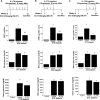
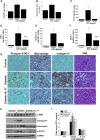
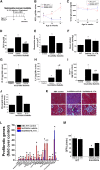

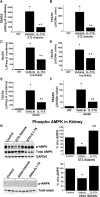

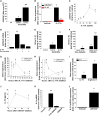


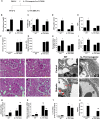
Comment in
-
Paradoxical Role of IL-17 in Progression of Diabetic Nephropathy.J Am Soc Nephrol. 2016 Mar;27(3):657-8. doi: 10.1681/ASN.2015070813. Epub 2015 Sep 2. J Am Soc Nephrol. 2016. PMID: 26334029 Free PMC article. No abstract available.
References
Publication types
MeSH terms
Substances
Grants and funding
LinkOut - more resources
Full Text Sources
Medical
Molecular Biology Databases

